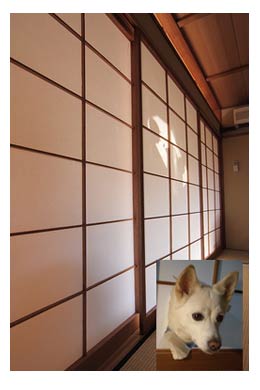Japanese homes are different from homes in the West. For example, there’s a low area by the front door called a genkan where you remove your shoes before entering, a Buddhist Altar for letting family members who have passed away that they’re not forgotten, and those dreamy tatami mats that I love sitting on, although they’re honestly not the best thing for people with dust allergies. Another unique feature of Japanese homes: shoji, the famous paper doors which are used to separate rooms. The doors slide sideways on wooden rails, so they don’t take up any space in cramped houses, and they bring a welcome Japanese touch to any room. Shoji have a tendency to turn yellow when they get old, so every few years you should replace the paper. Tearing the paper off the doors is just about the funniest thing in the world, and when my kids were small we’d make quite a game of it, punching through the paper and ripping it all off. The shoji paper market is quite large, with many different companies competing to sell you the best shoji paper. Variations include paper that’s hard to tear thanks to cotton fibers inside, and shoji you can hang by just running a hot iron over the paper.

Shoji doors maybe be beautiful, but they’re a challenge to maintain.















